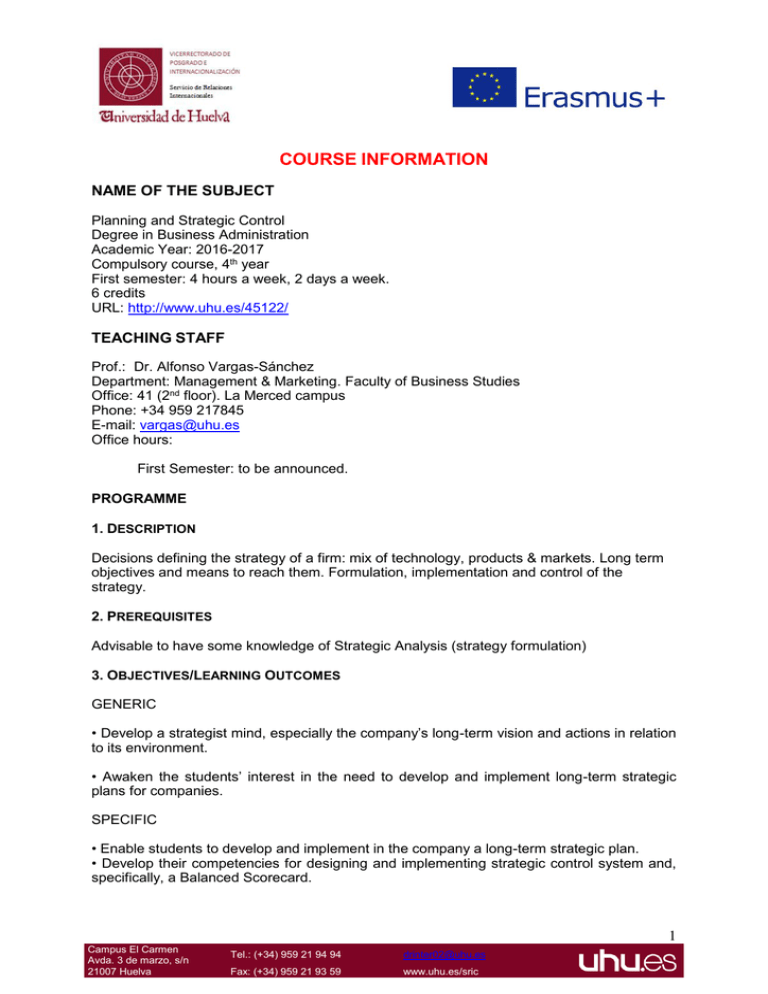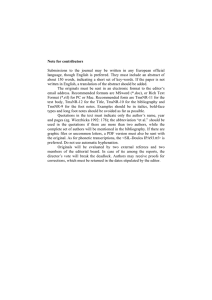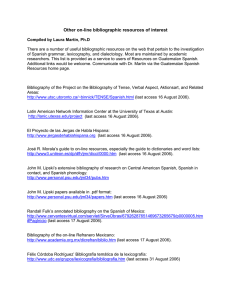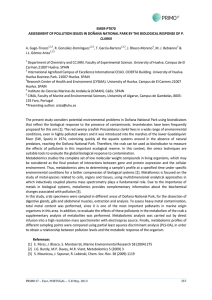Planificación y control estratégico
Anuncio

COURSE INFORMATION NAME OF THE SUBJECT Planning and Strategic Control Degree in Business Administration Academic Year: 2016-2017 Compulsory course, 4th year First semester: 4 hours a week, 2 days a week. 6 credits URL: http://www.uhu.es/45122/ TEACHING STAFF Prof.: Dr. Alfonso Vargas-Sánchez Department: Management & Marketing. Faculty of Business Studies Office: 41 (2nd floor). La Merced campus Phone: +34 959 217845 E-mail: vargas@uhu.es Office hours: First Semester: to be announced. PROGRAMME 1. DESCRIPTION Decisions defining the strategy of a firm: mix of technology, products & markets. Long term objectives and means to reach them. Formulation, implementation and control of the strategy. 2. PREREQUISITES Advisable to have some knowledge of Strategic Analysis (strategy formulation) 3. OBJECTIVES/LEARNING OUTCOMES GENERIC • Develop a strategist mind, especially the company’s long-term vision and actions in relation to its environment. • Awaken the students’ interest in the need to develop and implement long-term strategic plans for companies. SPECIFIC • Enable students to develop and implement in the company a long-term strategic plan. • Develop their competencies for designing and implementing strategic control system and, specifically, a Balanced Scorecard. 1 Campus El Carmen Avda. 3 de marzo, s/n 21007 Huelva Tel.: (+34) 959 21 94 94 drinter02@uhu.es Fax: (+34) 959 21 93 59 www.uhu.es/sric 4. TEACHING METHODOLOGY The regular lessons will be complemented with case studies to be presented and discussed in sessions scheduled for small groups. These case studies (available in the website of the course) are: AUTHENTREX - CORA - VR - GIVSA - BREAKFAST CEREAL MARKET – LA CASA DI POGGI All students must read all the recommended case studies and participate in the corresponding discussions actively. 5. CONTENTS PART I: STRATEGY FORMULATION THEME 1: COMPETITIVE STRATEGIES 1.-Introduction. 2.-The Porter's approach: generic strategies (Basic bibliography: Vargas, chapter 8, available in the site of the course). 2.1.-Cost advantage (Supplementary bibliography: Grant). 2.2.-Differentiation advantage (Supplementary bibliography: Grant). 2.3.-Specialization. 3.-Definition of business models: the CANVAS technique (“Business Model Generation”, available in the site of the course). THEME 2: GROWTH STRATEGIES 1.-Introduction. 2.-The Ansoff’s Growth Matrix. An integrating approach (Basic bibliography: Vargas, chapter 8, available in the site of the course). 2.1.-Expansion: Internationalization and global strategies (Supplementary bibliography: Grant). 2.2.-Diversification strategy (Supplementary bibliography: Grant). 3.-Vertical integration and scope of the firm (Basic bibliography: Grant). 4.-Internal and external growth (Basic bibliography: Johnson et al). 4.1.-Internal development. 4.2.-Mergers and acquisitions. 4.3.-Strategic alliances. THEME 3: STRATEGY AND COMPETITIVE SITUATIONS 1.-Defensive strategies and strategies of attack (Basic bibliography: Lynch). 2.-Industry evolution and strategic change (Supplementary bibliography: Grant). 3.-Technology-based industries and the management of innovation (Supplementary bibliography: Grant). THEME 4: EVALUATION AND SELECTION OF STRATEGIC ALTERNATIVES 1.-Success criteria. 2.-Suitability. 2 Campus El Carmen Avda. 3 de marzo, s/n 21007 Huelva Tel.: (+34) 959 21 94 94 drinter02@uhu.es Fax: (+34) 959 21 93 59 www.uhu.es/sric 3.-Acceptability. 4.-Feasibility. Basic bibliography: Johnson et al. PART II: ESTABLISHMENT OF A STRATEGIC CONTROL SYSTEM THEME 5: STRATEGIC CONTROL 1.-Introduction: the process of (strategic) control. 2.-The Balanced Scorecard (BSC). 2.1.-Perspectives. 2.2.-Strategic maps. 2.3.-Measuring the company’s performance: indicators. 2.4.-The BSC in action: case studies. Ebook: http://0-site.ebrary.com.columbus.uhu.es/lib/bibuhuelib/docDetail.action?docID=10114258 PART III: STRATEGY IMPLEMENTATION THEME 6: LEADERSHIP AND ORGANIZATIONAL CULTURE 1.-Purpose and the role of leadership. 2.-Purpose shaped by ethics and Corporate Social Responsibility. 3.-Strategy before structure? 4.-Building the organization’s structure: basic principles. Types of organizational structures. 5.-Choice of management style and culture. Basic bibliography: Lynch. THEME 7: MANAGING STRATEGIC CHANGE 1.-Introduction. 2.-Diagnosing the change situation. 3.-Change management: styles and roles. 4.-Levers for managing strategic change. 5.-Potential pitfalls of change programmes. Basic bibliography: Johnson et al. Supplementary bibliography: Lynch. 6. BIBLIOGRAPHY -Grant, R.M. Contemporary Strategy Analysis. Oxford: Blackwell Publishers, 2008 & 2010. -Johnson, G.; Scholes, K.; Whittington, R. Exploring Corporate Strategy. Text and Cases. Harlow: FT-Prentice Hall, 2005 & 2008. -Lynch, R. Corporate Strategy. Harlow: FT-Prentice Hall, 2006. -Vargas, A. Strategic Management. Huelva: University of Huelva, 2009. 7. ASSESSMENT 3 Campus El Carmen Avda. 3 de marzo, s/n 21007 Huelva Tel.: (+34) 959 21 94 94 drinter02@uhu.es Fax: (+34) 959 21 93 59 www.uhu.es/sric -Written exam (compulsory): 60% -Case writing (individual work, to be presented to the facilitator): 20% -Attendance, participation and other works: 20% 4 Campus El Carmen Avda. 3 de marzo, s/n 21007 Huelva Tel.: (+34) 959 21 94 94 drinter02@uhu.es Fax: (+34) 959 21 93 59 www.uhu.es/sric


